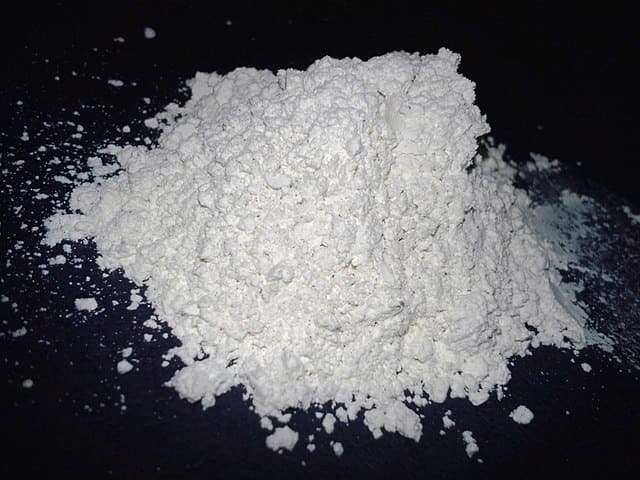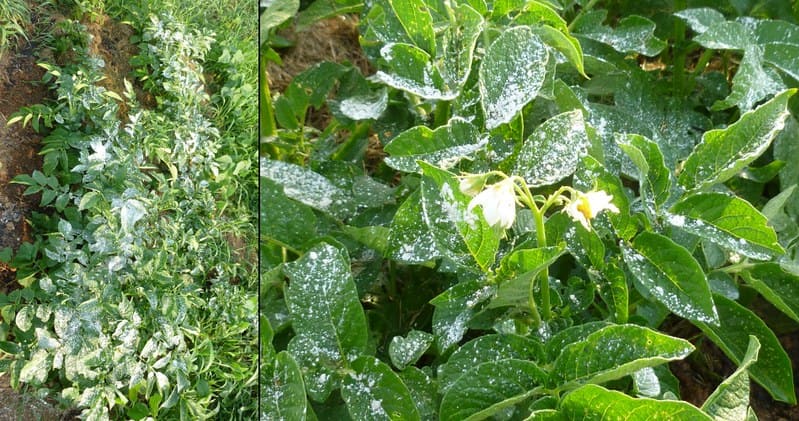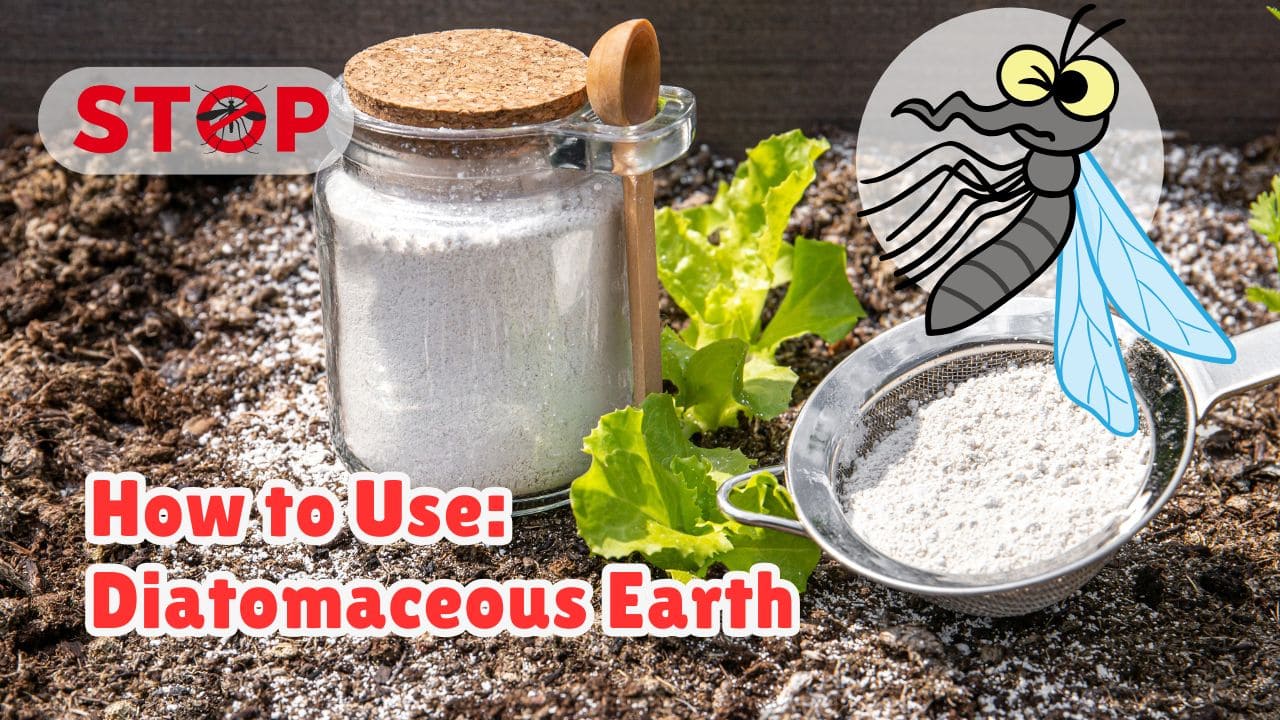Recently there has been an increased demand for natural alternatives to prevent mosquito bites and control their population. One of the safest and natural methods to use is Diatomaceous earth in place of harmful chemicals and repellents. In this article, we will explore, how to use diatomaceous earth to kill mosquitoes and how actually it works on insects and what are its benefits.
Table of Contents
What is diatomaceous earth?
Diatomaceous earth, also known as diatomite, celite, or kieselguhr, is a soft siliceous sedimentary rock which is formed from the fossilized remains of certain type of hard-shelled algae, a tiny unicellular aquatic organisms called diatoms.
It can be made into a fine white to off-white powder which has a very low density because of highly porous structure.
What is Kieselguhr: Is a naturally occurring soft sedimentary rock, which is actually a form of silica composed of siliceous shells of unicellular aquatic plants of microscopic size. It consists of 90% silica and remaining aluminum and iron oxides. Mainly used as filtration aids, fire bricks, as fillers, as insulators and as adsorbents.
What is diatomaceous earth made of?
It is formed by continuous accumulation of diatoms remains over millions of years due to sedimentation in water bodies. It contains around 80-90% silica, around 2 to 4% of alumina and 0.5 to 2% iron oxides along with clay, sand and volcanic ashes.

Image Credit: Wikimedia by SprocketRocket | Creative Commons License
What does diatomaceous earth kill?
Thanks to its abrasive and dehydrating properties which makes it effective insect control and pest control agent. It is effective against a wide range of pests and insects which includes:
- Insects with Exoskeletons:
– Ants
– Mosquitoes
– Bed bugs
– Fleas
– Cockroaches
– Ticks
– Spiders
- Crawling Insects:
– Silverfish
– Centipedes
– Mites
– Beetles
– Slugs
Types of Diatomaceous earth
The are two main types of Diatomaceous earth or kieselguhr, as follows:
- Food Grade Diatomaceous earth: It is safe for humans and pets, and most commonly used in gardening purposes, and pest control applications.
- Pool Grade Diatomaceous earth: It is not suitable for gardening or pest control. These are specially treated for various other applications like Fillers and filtration aids.
For mosquito control and other pests related issues, it is the food grade type that is being used.
How does diatomaceous earth work?
Diatomaceous earth is not a chemical that acts like a poison for pests. But it works through a mechanical action. It is abrasive in nature with very fine and sharp edges. It also acts as a desiccator and absorbs most of the moisture around it, upto 150% of its weight.
How Diatomaceous earth works against insects?
The mechanism is purely mechanical and is based on absorbing most of the moisture, oils and fats from the insect’s outer cuticle layer of their body. This dry out the insects and leaving their exoskeleton bone dry which leads to their death. The abrasive and sharp edges of particles scrape this protective layer speeds up the process.
To make it effective it should be left dry and without any disturbance. It loses effectiveness when becomes wet, so it should not be put inside the birdbath, ponds, fountains, etc.
Effect of Diatomaceous earth on Mosquitoes
Diatomaceous earth as a pest control or pesticide, is best suitable for insects with exoskeletons like mosquitoes. Mosquitoes and other such insects have a waxy outer layer on their exoskeletons which retains moisture and prevents dehydration during hot weathers and humidity fluctuations.
Also, this waxy layer is scraped and removed to some extent when comes in direct contact with the insects.
When this moisture retaining layer is removed and the rest of the moisture from the insects and their surroundings are absorbed causing severe dehydration. This loss of moisture continues and dehydrate until they die.
This loss of moisture is extremely lethal for mosquitoes as they are very delicate and dehydrate to death in absence of moisture.
Does Diatomaceous Earth Kill Mosquitoes?
Yes, diatomaceous earth when used as a pesticide for mosquitoes can effectively kill them. It scrapes off the moisture retaining barrier and expose their exoskeleton which gets easily dehydrated in its presence.
Action mechanism: How Diatomaceous earth kill Mosquitoes:
- Abrasive Damage: Insects have a protective thin waxy layer on their exoskeleton which prevents any loss of moisture from their body and thus protects them from any excessive dehydration. The sharp edges of the abrasive particles causes cuts and abrasions which helps in scraping off and removal of the protective layer, which exposes the exoskeleton.
- Absorption of oils and wax: The stripped off and abraded remains of this protective layer is further acted upon and this time the DE absorbs the oils and lipids from this layer. In the absence of these lipids the insect’s protection gets compromised as they can’t retain moisture anymore.
- Dehydration: As it absorbs essential oils and fats from the outer layer of the mosquito’s body, mosquitoes undergoes severe dehydration.
- Desiccation: With the absence of outer layer, the mosquito starts dehydrating and desiccates to death.
Its a complete mechanical action and therefore mosquitoes didn’t get any chance of developing resistance to it and therefore its a sustainable choice for mosquito control and prevention.
How to use diatomaceous earth to kill mosquitoes?
Using diatomaceous earth to kill mosquitoes involves a controlled and strategic application. Best practices for using diatomaceous earth to kill mosquitoes in and around your home are as follows:
- Target mosquito breeding grounds: Breeding grounds near any stagnant water can develop 100s of eggs in every clutch and the population and extent of infestation decides the factor at which mosquitoes will be maturing. This mosquito breeding spots should be targeted with top most priority.
Sprinkle diatomaceous earth (DE) powder around the potential breeding grounds like bird baths, flower pots, rain barrels, edges of ponds, etc. This will restrict the mosquitoes from crossing and reaching the waterbody. Also note that it should not be added directly in the water body, as it becomes ineffective when wet.
- Creating a barrier zone: Sprinkle DE in areas with high mosquito frequency or around objects that can attract mosquitoes. Create a barrier around sitting areas like porches and patios, doors and windows and all access entry points by spreading a thin layer of DE powder. The mosquitoes finds difficult to stay around or cross this entry barrier.
- Apply in your garden: There are many hiding spots for mosquitoes in your garden specially within the dark and dense bushes and foliage, within tall and overgrown grasses, clippings of lawn grasses, etc. Spread DE powder in moderation around such spots so that no any beneficial insects gets harmed. A light dusting around the plants and edges of green cover is enough to deter mosquitoes from your garden.
- Reapply with consistency: It can be washed off easily after rains or watering on lawns and garden plants and vegetation. Also, during climates with high humidity and rainy weathers, its efficiency goes down due to high moisture in the air, thus becoming saturated already with the atmospheric moisture. Thus, reapplication is necessary to maintain its effectiveness.

Image Credit: Flickr by Renee | Creative Commons License
Choose the right type of Diatomaceous earth
Pool grade diatomaceous earth is made by treating at high temperatures and is highly crystalline and not safe when inhaled or ingested. It can cause hazardous and fatal accidents if consumed. And for using as a pest control agent, we need to keep it with other items and will touch it during use and application. So, this pool type diatomaceous earth should be avoided for using it for pest control.
While the food grade diatomaceous earth is the safest and effective against pests. This type of DE do not contains any harmful additives and is safe to use in gardens, homes and around pets.
Effective ways to use Diatomaceous earth:
- For Indoor use: Use DE powder around the corners, below and sides of furniture, window sills, flower pots, hanging plants, and all access points. A thin layer is just enough, as applying thick layer makes no difference. The insects can easily fly over without any contact.
- Outdoor applications: Spread DE powder around the outdoor sitting spaces, patios, porches and garden beds. Don’t waste by sprinkling on wet lands and watered plants as they become ineffective when comes in contact with water. Spread around the bird baths, puddles and pond, specially those places which we can’t dump or empty.
- Using DE around pet areas: Before using DE around pet areas make sure it is of food grade type. This will help in eliminating any fleas and mosquitoes around the pet’s sleeping and feeding areas. This will also help in reducing mosquito breeding in nearby standing waters.
Frequency of application of Diatomaceous earth:
- In Indoors, where it is frequently cleaned or vacuumed you need to apply every 2 weeks or sooner.
- In outdoor areas, you should reapply specially after rains.
- During mosquito seasons it is advisable to use DE through a consistent application schedule.
- Regular reapplication is required irrespective of the location and weather, in areas of high mosquito traffic and standing waters and around mosquito hiding spots.
Enhancing diatomaceous earth’s effectiveness in mosquito control
The efficacy of using diatomaceous earth to kill mosquitoes can be maximized by combining it with other mosquito control methods as discussed below:
- Pairing it with natural mosquito repellents: After sprinkling DE powder, use essential oil based repellents like citronella, eucalyptus, lavender, tea tree oil, etc. to create a dual protection layer that is more harder to cross.
- Mosquito-proofing standing water sources: Empty or dump the standing water sources which attract mosquitoes like bird baths, plant pot saucers, pet bowls, etc. And for other standing waters which cannot be dumped, try to install aerators or pumps to create continuous movements in water which will prevent mosquitoes from laying eggs. Also, make use of mosquito dunks in toilet bowls, water sinks, septic tanks, ponds, fountains and bird baths, to kill mosquito larvae.
Conclusion
Diatomaceous earth is an effective tool to kill mosquitoes without using any chemicals. The food grade diatomaceous earth powder is natural, safe and non toxic to humans and pets. It can be used effectively in an integrated pest management strategy.
Being safe and effective, it can also be used selectively where other useful insects can be taken care of. There is no risk of chemical runoffs and polluting soil and water sources.
A proper application method and best practices will make this versatile tool, the most effective one in your mosquito control strategy.
Frequently Asked Questions (FAQs)
-
Is diatomaceous earth safe for humans?
Yes, particularly the food grade DE is safe for humans as well as pets, when used correctly. Accidental inhaling or ingestion may cause certain health issues and therefore it is recommended to use safety mask while handling diatomaceous earth or diatomite. Inhaling DE can cause irritation in lungs and any prolonged exposure may lead to silicosis.
-
Can I sprinkle diatomaceous earth in my house?
DE is a fine powder and when sprinkled or dusted heavily inside house it tends to remain in air as dust. Select food grade diatomaceous earth for using inside your house. Although it is safe but, any airborne dust or accidental inhaling of DE dust can cause irritation in lungs and respiratory problems.
-
How long does diatomaceous earth last?
It can last indefinitely, as long as it remains dry and untouched. It does not expire or loses its effectiveness over time. But, it should be kept dry to be effective and last as long as we want.
-
Can I put diatomaceous earth in water and spray?
Yes you can use diatomaceous earth in water and spray, but it will take a lot of time to dry and need strong direct sunlight and hot weather with low humidity to get dry off. But, it must be noted that even slightest moisture presence in DE will reduce its effectiveness drastically.
-
Can you mix diatomaceous earth with baking soda?
Yes it can be mixed with baking soda, as baking soda itself is highly alkaline and have pest repelling properties. But baking soda lacks exclusive abrasiveness and dehydrating efficiency of DE. therefore even being not that effective in insect repelling, baking soda can be mixed with diatomaceous earth to amplify the overall effect.
-
How long does it take to see benefits of diatomaceous earth?
It depends on the pests and conditions under which it has been applied. For common insect control, specially ants and fleas, it will give results within 24 to 48hrs. For larger and resilient pests, it may take more than 72hrs to get noticeable results.
-
What are the benefits of diatomaceous earth food grade?
Food grade diatomaceous earth provides benefits like: Pest control, improved digestion, natural detoxification, skin elasticity and hair health.
-
What are the benefits of diatomaceous earth for dogs?
Food grade diatomaceous earth is beneficial and good for dogs health, provided is use with caution. Its benefits in dogs health improvement includes natural dewormer in case of stomach parasites, flea and tick control, joint health by promoting collagen production.

